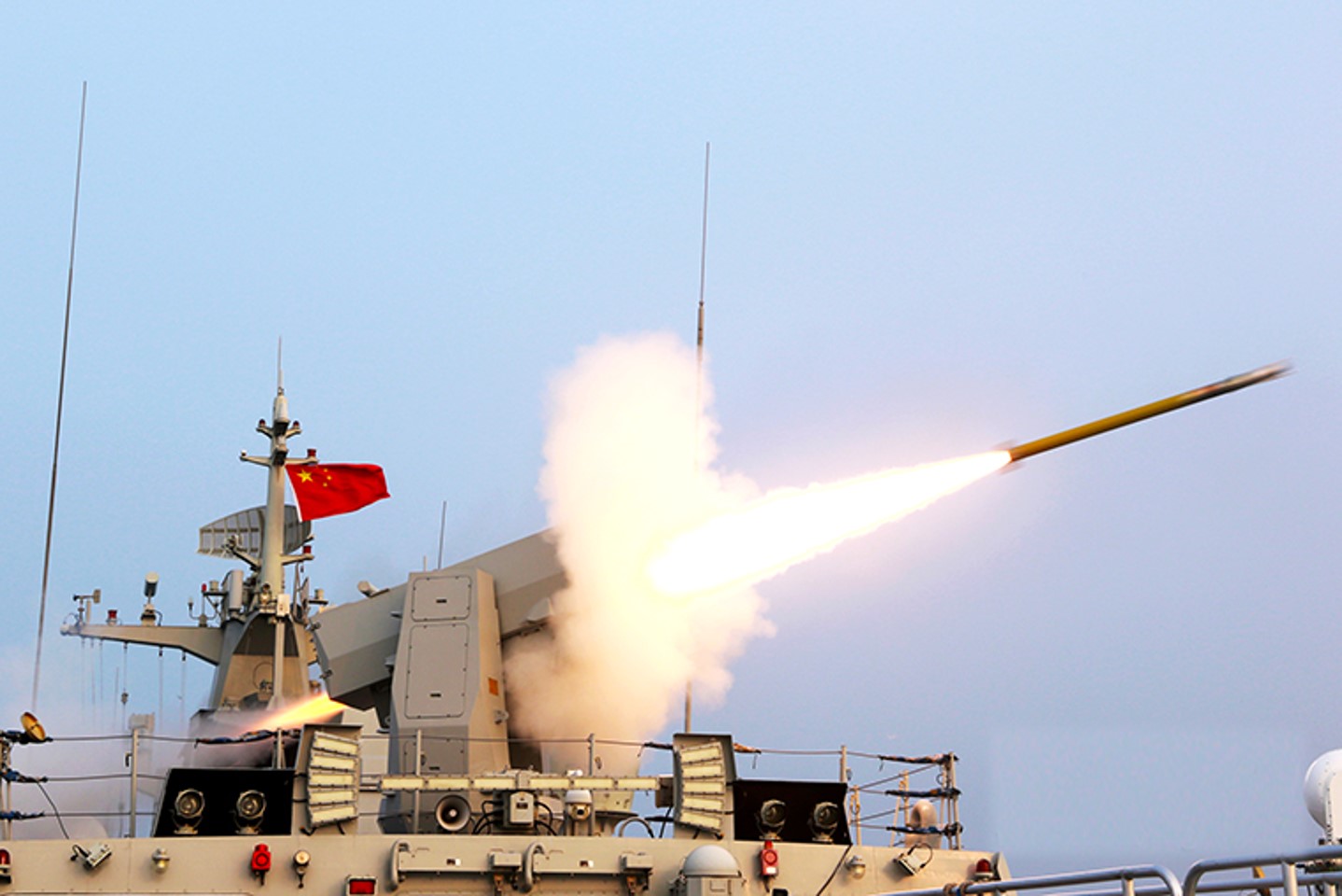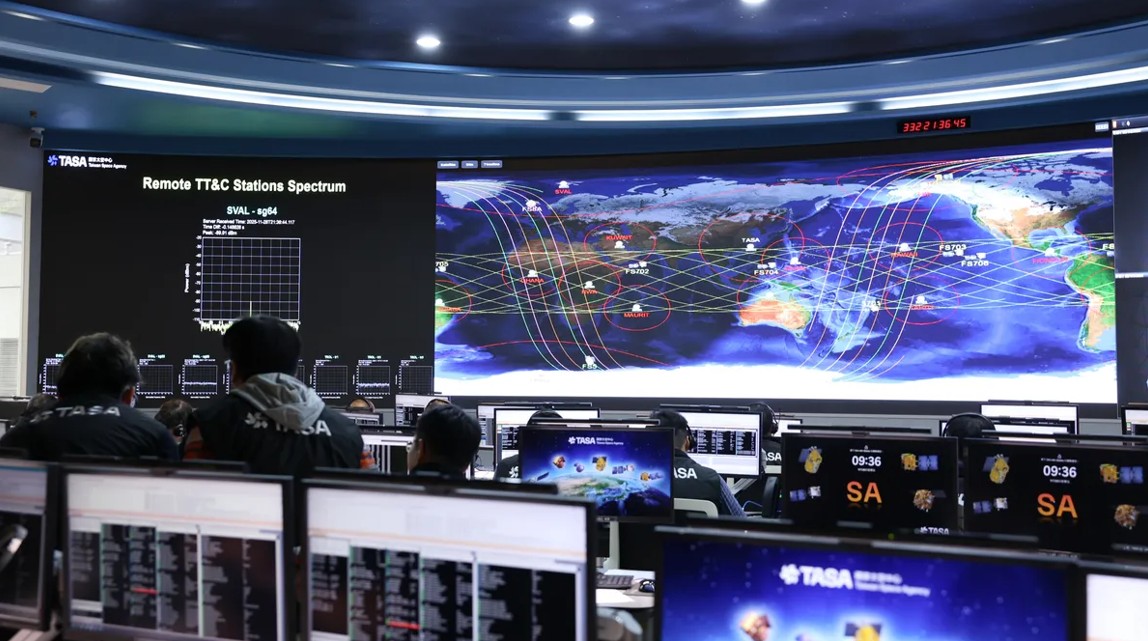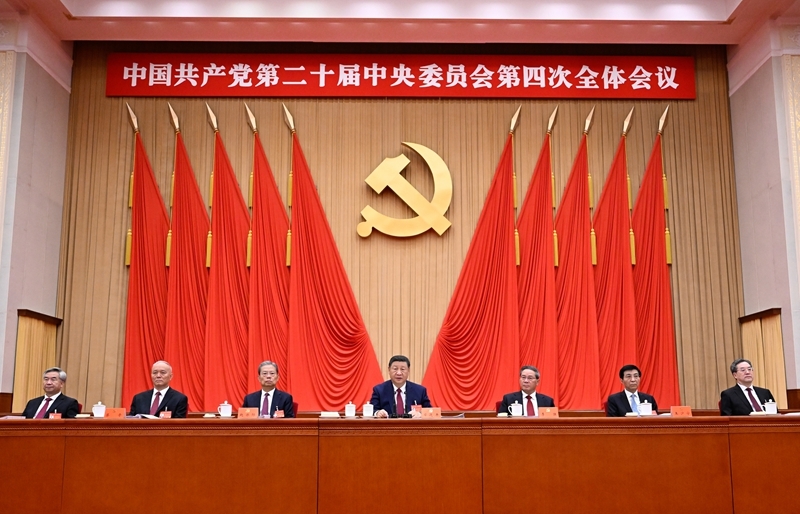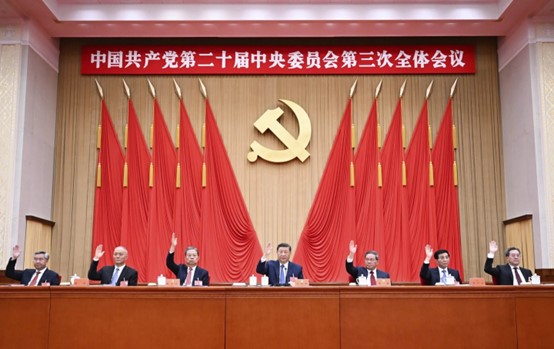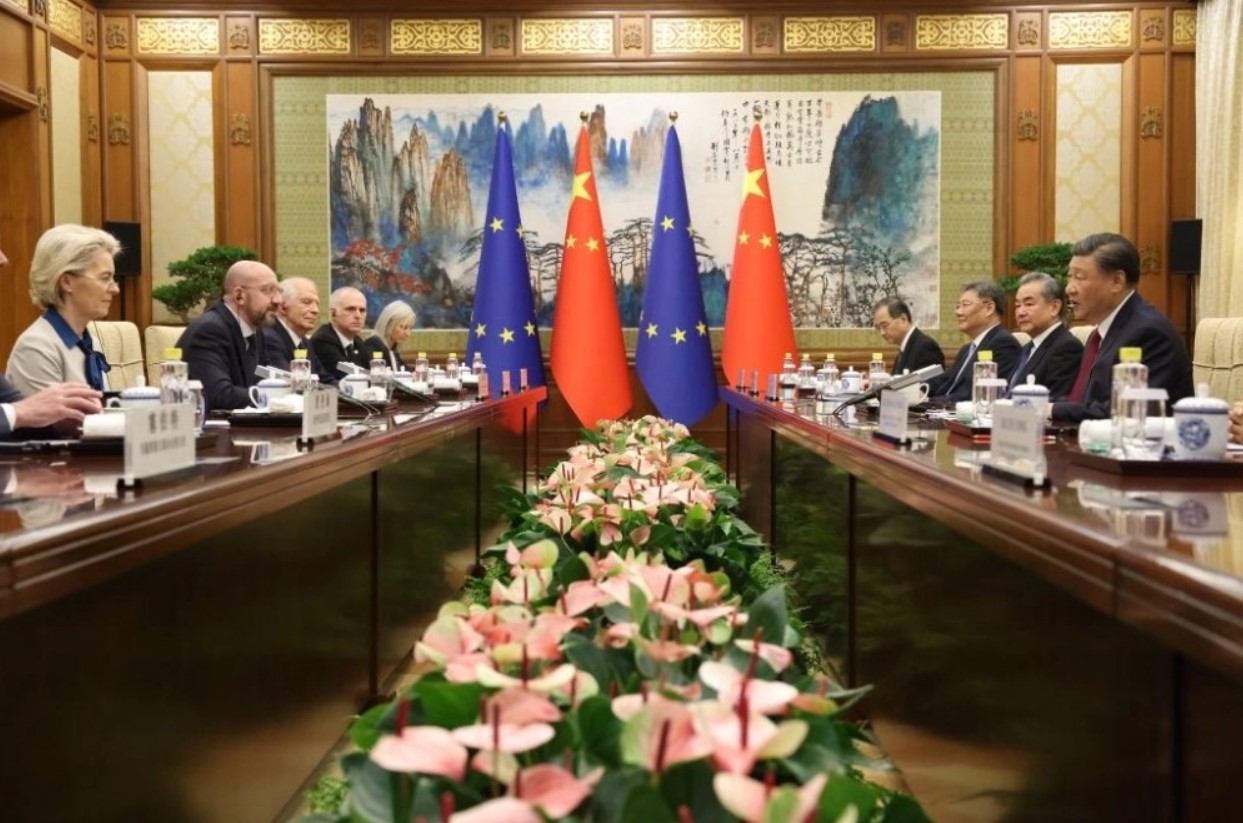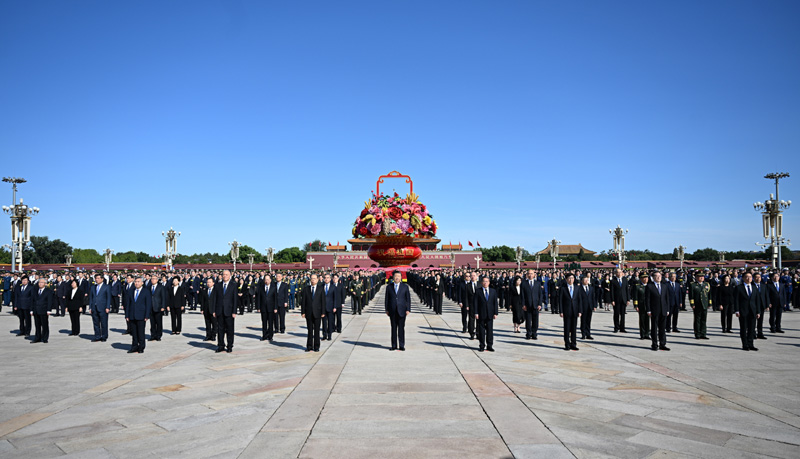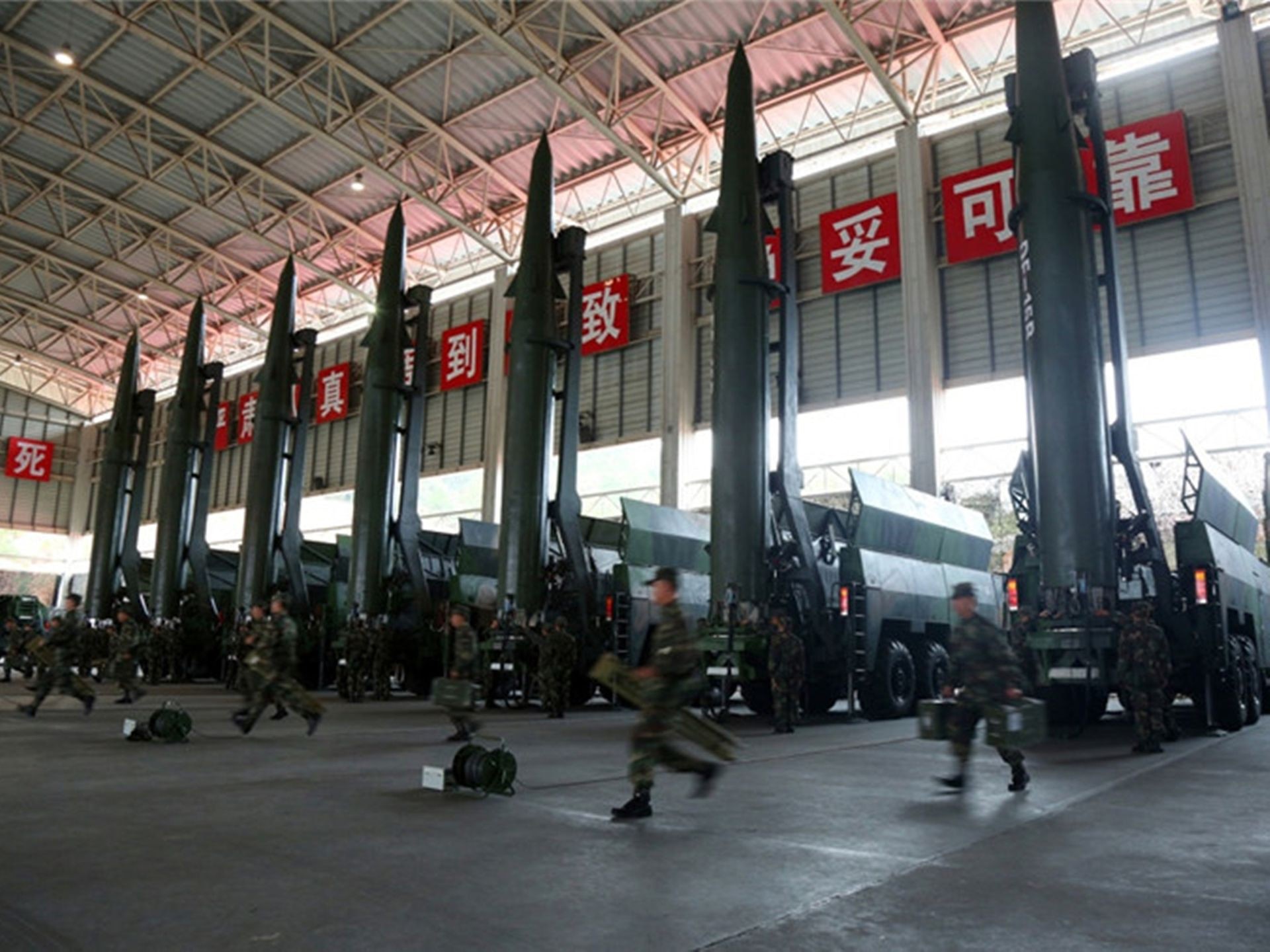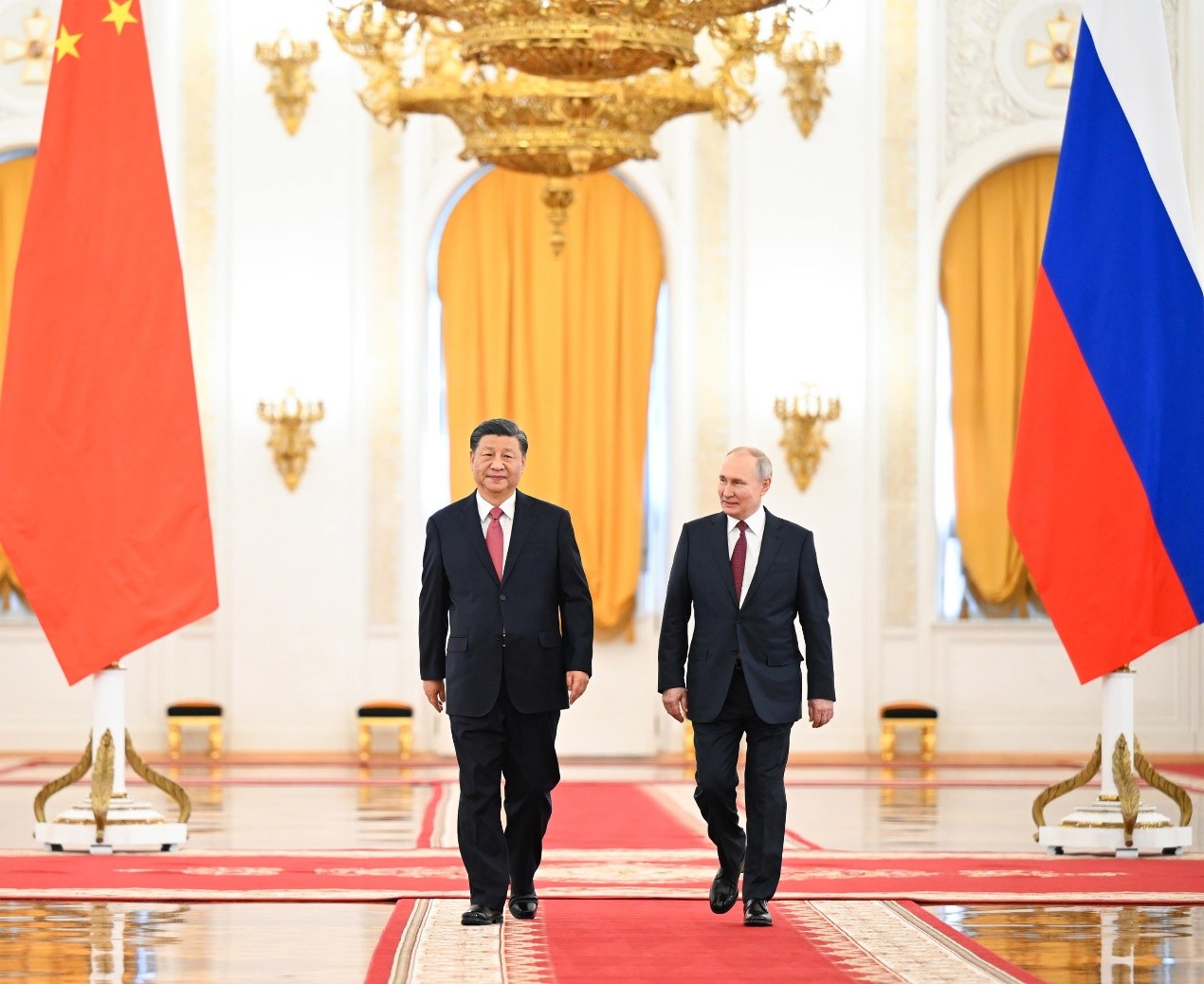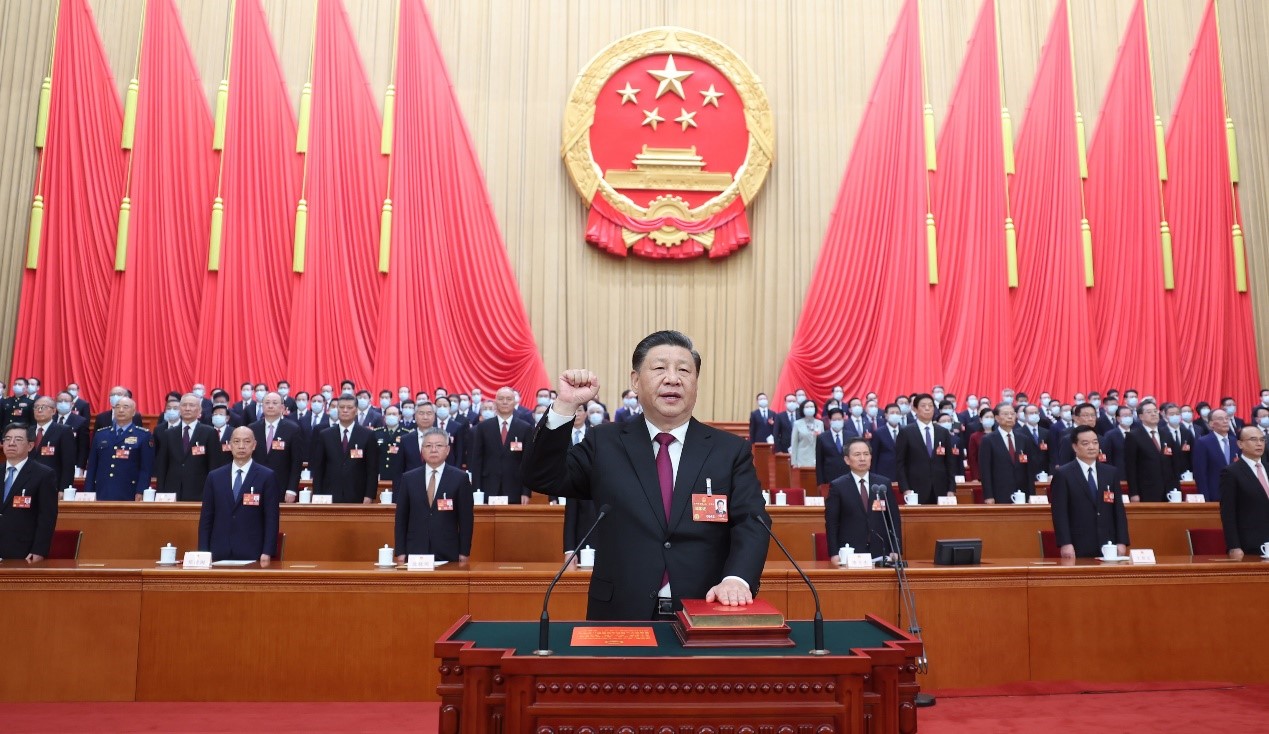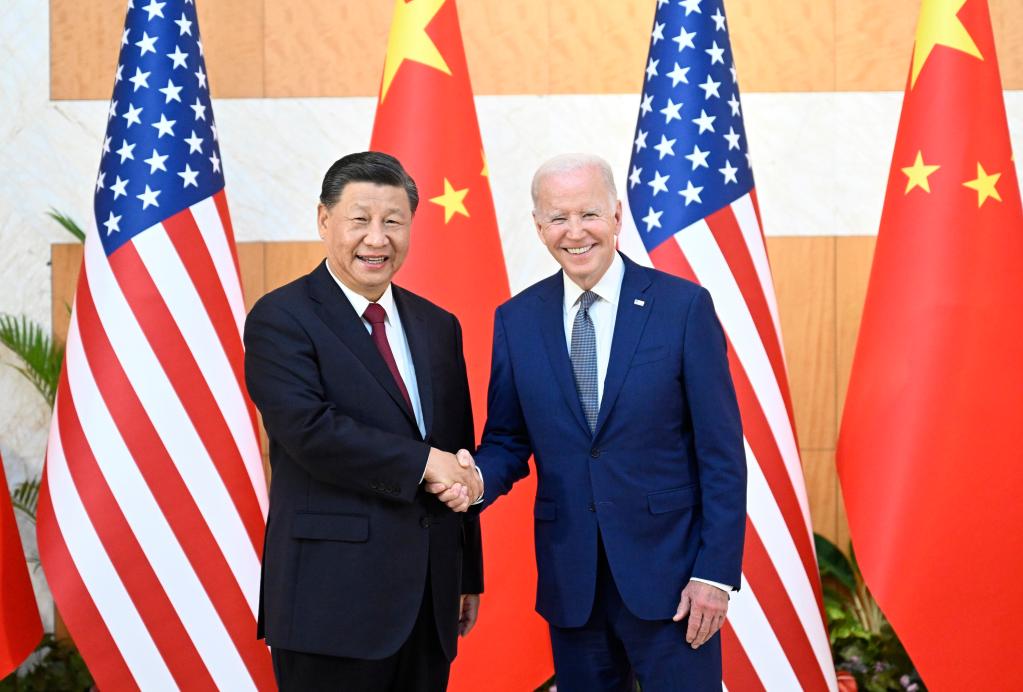The 2023 CMPR noted that the PRC has increased its efforts and preparations for a possible action against Taiwan. Based on Xi’s direction, the PLA will be ready for its diverse options by 2027. Photo source: 馬廣興, August 14, 2022, PRC MOD, http://www.mod.gov.cn/gfbw/wzll/hj/4918228.html.
Prospects & Perspectives No. 69
Key Takeaways for Taiwan from the Pentagon’s PLA Report
By Guermantes Lailari
The U.S. government publishes many reports about China. One is especially important for Taiwan’s security: China Military Power Report (CMPR). Since 2000, the U.S. Department of Defense (DOD) is required by law to publish the annual CMPR report to Congress evaluating China’s People’s Liberation Army (PLA). Each CMPR comprises 200 pages of statistics, trends, and analyses about the PLA.
Why is it important for Taiwan? The CMPR guides recommendations about defense planning by the U.S. government, Congress, think tanks, and others. The CMPR also informs defense discussions and planning for Japan, South Korea, the Philippines, Taiwan, and other concerned nations about the PLA’s power and consequently the threat it poses. The annual report highlights the previous year’s events and notes significant changes from year to year. The 2023 CMPR contains significant issues for Taiwan’s government, businesses, and population to consider for Taiwan’s future defense requirements.
Taiwan and the CMPR
How important is Taiwan in the CMPR? One way to measure Taiwan’s importance is to count the number of references to Taiwan in the CMPR. The 2023 CMPR mentions Taiwan 261 times. The CMPR mentions Taiwan 194 times in 2022, 177 in 2021, and 160 in 2020. The increasing number of references to Taiwan aligns with the growing threat posed by the PLA’s rise in power and recognition of that fact at the U.S. DOD and in the region. For example, in December 2022, Japan’s government announced the doubling of its defense budget in the next five years in answer to the PLA and North Korean threats. This year’s report reveals a more aggressive PLA expansion than last year.
The report evaluates the PLA’s capabilities and discusses senior Chinese Communist Party (CCP) officials’ statements of intent. The CMPR contains the following six sections focused exclusively on Taiwan:
- Developments in the security situation in the Taiwan Strait
- PRC military courses of action against Taiwan
- Civilian roll-on/roll-off (roro) ships and their potential use in a Taiwan invasion
- PLA’s current posture for a Taiwan conflict
- Taiwan’s ability to deter the mainland
- PRC and Taiwan forces data
PLA Defense and Military Strategy
In the section on PLA defense and military strategy, the CMPR referred to Xi Jinping’s 20th Party Congress opening speech in October 2022, where he reiterates his expectation that the PLA will be modernized (“mechanized, intelligentized, and informationized”) and fully integrated by 2027. He re-emphasized “the CCP’s longstanding public position that China seeks peaceful unification with Taiwan but would never renounce the use of force as an option.”
The CMPR notes that Xi’s expectations “give the PLA the capacity to be a more credible military tool for the CCP’s Taiwan unification efforts.” Furthermore, the report noted the PLA will develop “capabilities to counter the U.S. military in the Indo-Pacific region and compel Taiwan’s leadership to the negotiation table on the PRC’s terms” to achieve Xi’s 2027 goals.
According to the CMPR, the PLA has several options to coerce Taipei including via “cyberspace, blockade, and kinetic campaigns designed to force Taiwan to capitulate to unification or compel Taiwan’s leadership to the negotiation table on the PRC’s terms” and “to deter potential U.S. intervention in any Taiwan contingency campaign.”
The PLA’s Capabilities Continue to Grow
The PLA Navy (PLAN) would play a key role in any invasion or blockade scenario against Taiwan. According to the CMPR, the PLAN is now the largest naval force in the world with “a battle force of over 370 platforms, including major surface combatants, submarines, ocean-going amphibious ships, mine warfare ships, aircraft carriers, and fleet auxiliaries. The PLAN’s overall battle force is expected to grow to 395 ships by 2025 and 435 ships by 2030” while the U.S. Navy will have only 305 to 317 ships by 2030.
The PLAN numbers do not include approximately 60 Houbei-class patrol combatants that carry anti-ship cruise missiles (ASCM). Additionally, by adding the Chinese Coast Guard (CCG) — the largest maritime law enforcement fleet in the world — the Maritime Militia, and Chinese civilian ships, these vessels expand the PRC’s many options to use its maritime presence, conduct gray zone operations, and naval operations.
In addition to many ships at their disposal, a leaked unclassified U.S. Navy Office of Naval Intelligence document noted that the PRC has shipbuilding capacity 200 times greater than that of the U.S. and produces over forty percent of the global market.
Areas of Concern
The CMPR noted the following areas of DOD concern:
Intensifying pressure against Taiwan: During 2022, the PLA fired 11 ballistic missiles over and near Taiwan, including into Japan’s exclusive economic zone. During an August 2022 exercise following former Speaker of the House Pelosi’s visit to Taiwan, the PLA conducted more than a dozen naval patrols, and hundreds of flights into Taiwan’s claimed Air Defense Identification Zone (ADIZ). Throughout the year, the PLA continued to conduct exercises and increased the number of flights into Taiwan’s self-declared ADIZ. The PLAN sailed ships, including several aircraft carrier strike groups, near Taiwan. In April 2023, the PLA responded to President Tsai Ing-wen’s transit through the U.S. on her way to and from South America by conducting another large-scale exercise.
Strengthening PLA nuclear, space, and counterspace capabilities: As of May 2023, the PRC possessed approximately 500 operational nuclear warheads. By 2030, the PRC is expected to have more than 1,000 operational nuclear warheads. By 2035, the PLA could have operational strategic nuclear weapons parity with the U.S. The PRC is now producing nuclear weapons at a faster rate than previously projected.
Deepening PRC-Russia ties: In February 2022, prior to Russia’s invasion of Ukraine, Xi and Putin signed a “no-limits” agreement under which the PRC has learned many lessons from the war. For example, the PRC learned the necessity of preparing for economic sanctions and “defense and technological self-sufficiency and financial resilience.” Such lessons also apply to Taiwan. Taiwan should prepare to counter PLA threats and plan for defense self-reliance and social/civil resilience during PLA operations.
Increasing PRC military coercion: Besides the PLA’s aggressive air and sea patrols near Taiwan, the CMPR noted that during the two-year period from Fall 2021 to Fall 2023, the US “documented over 180 instances of PLA coercive and risky air intercepts against U.S. aircraft in the region — more in the past two years than in the previous decade.” During same period, the CMPR recorded about 100 coercive and risky operational acts against U.S. allies and partners by the PLA to deter the U.S. and its allies conducting lawful operations in the region.
The PLA and its auxiliary naval assets challenge freedom of navigation operations in the South China Sea (SCS). PLA actions, such as lasing, reckless maneuvers, close approaches in the air or at sea, high rates of closure, and discharging chaff or flares in front of or near aircraft, contravene “flight safety protocols and the international maritime rules of the road, and increases the risk of a major accident, incident, or crisis, including the potential for loss of life.”
These aggressive actions could be helpful in training the CCG and other naval assets to assist a PLA blockade prior to, during, or even after a PLA invasion of Taiwan. Ongoing PLA recklessness could also result in a military escalation.
Concluding Thoughts: Defense Leadership, Spending, and Preparations
The CMPR pointed out that Xi used “Taiwan-centric operational experience” selection criteria to replace some members of the Chinese Military Commission (CMC). Some of these new members of the CMC were military commanders in the Eastern Military District who have military planning experience against Taiwan.
The CMPR noted that even if the economy is stagnant and contracting, the “PRC can support continued growth in defense spending for at least the next five to 10 years.”
In summary, the 2023 CMPR noted that the PRC has increased its efforts and preparations for a possible action against Taiwan. Based on Xi’s direction, the PLA will be ready for its diverse options by 2027.
Taiwan’s government and civil society should take note of the increased PLA threat and prepare, plan, train, and exercise to enhance its deterrence. And, if deterrence fails, Taiwan should be prepared in the military and civilian realms. Like the Latin proverb: Si vis pacem, para bellum (If you want peace, prepare for war).
(Guermantes Lailari is a retired US Air Force Foreign Area officer. He is a visiting researcher at National Chengchi University.


